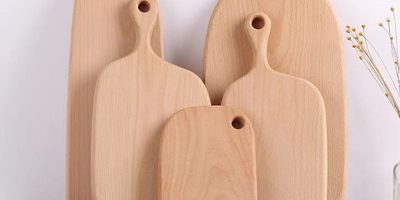Wooden cutting boards have a timeless charm, and many people inherit or come across vintage cutting boards that have seen better days. In this article, we’ll explore the art of rescuing and restoring old wood cutting boards, giving them a new lease on life.
1. Identifying Hidden Gems: Learn how to identify old wood cutting boards that are worth restoring. Discover the telltale signs of quality craftsmanship and the potential beauty beneath years of use and neglect.
2. Cleaning and Sanitizing: Step-by-step, we’ll guide you through the process of cleaning and sanitizing old wood cutting boards to remove dirt, grime, and any potential contaminants. This ensures they are safe to use for food preparation.
3. Removing Stains and Odors: Find out how to tackle stubborn stains and lingering odors that often plague vintage boards. We’ll explore natural methods and gentle abrasives for restoration.
4. Sanding and Refinishing: Understand the importance of sanding and refinishing to restore the board’s smooth surface and natural luster. We’ll provide detailed instructions on how to achieve a pristine finish.
5. Conditioning and Oiling: Discover the vital step of conditioning and oiling old wood cutting boards to rejuvenate the wood fibers, prevent drying and cracking, and enhance their longevity.
6. Preserving Character: Embrace the character and history of your restored cutting board. We’ll discuss how to preserve unique features like scars and patina that tell a story of years of use.
By the end of this article, you’ll have the knowledge and skills to rescue and restore old wood cutting boards, turning them into cherished heirlooms that can continue to serve in your kitchen for years to come.






